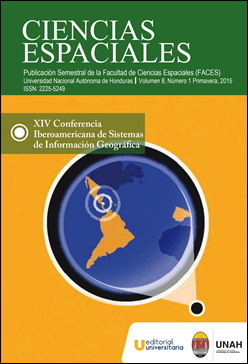Climate change (sea level rise, flooding and salinity) and vulnerable resident communities in the watershed of the Río Piedras: San Juan, Puerto Rico
DOI:
https://doi.org/10.5377/ce.v8i1.2057Keywords:
Climate change, Vulnerability, Río Piedras River Watershed, Geographic Information SystemsAbstract
The main purpose of this study was to measure the effect of climate change (sea level rise, flooding and salinity) in several communities of the río Piedras River watershed. I also determined the perceptions of residents about the effects of sea level rise (SLR), salinity and floods over their health, property, and quality of life. I tested and modeled the perceived situation against the existing reality for each community. For this analysis I used Digital Elevation Model and Digital Line Graph created by the USGS and other survey data collected in the field with a Global Positioning System, as well as data on soil salinity and particle size from water sampling for salinity, conductivity, pH, and dissolved oxygen. Models were also created for SLR and were compared with those made by NASA. Vulnerability studies were carried out using interpolation, spatial regression, and multivariable analysis. These analyses were performed using ArcGIS, Excel, Stata, and EPINFO software programs. Communities with the highest level of vulnerability to climate change were: Ocean Park and Reparto Metropolitano. Communities with a lower index of vulnerability to climate change were: La Sierra and Las Curías. Communities with a higher index of vulnerability to SLR were: Ocean Park and Old San Juan. Communities with a lower index of vulnerability to SLR were: Las Curías and La Sierra.
Revista Ciencias Espaciales, Volumen 8, Número 1 Primavera, 2015; 344-369
Downloads
1123




